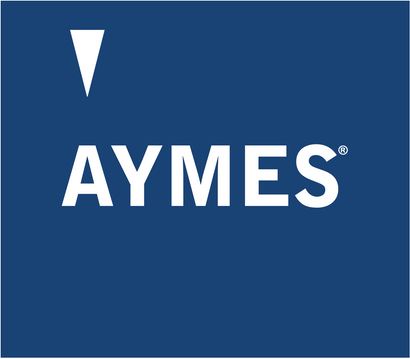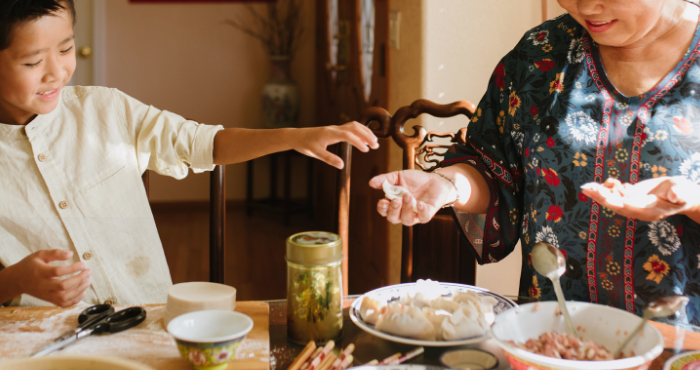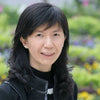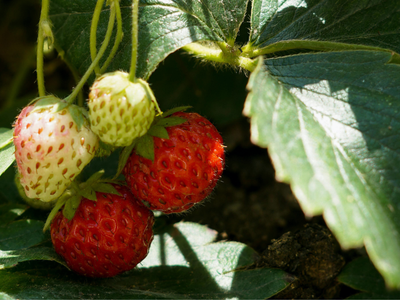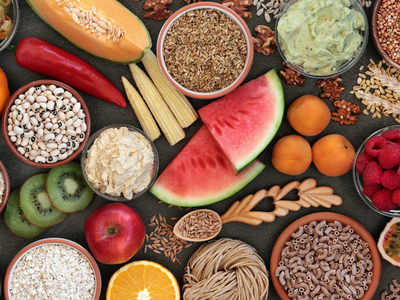Your Cart is Empty
Nutrition Support Information for Chinese Diets
Introduction
Recent census data suggests that there are 433,150 people identifying as Chinese in the United Kingdom, (UK), making up 0.7% of the total population (1). There are 56 ethnic groups in China, with major ethnic groups including Zhuang, Uyghur, Hui, Manchu (to name a few!). Most Chinese people living in the UK originate from Hong Kong and Mainland China, with a smaller percentage from Malaysia, Vietnam, Singapore and Taiwan (2).
The prevalence of malnutrition amongst the UK Chinese population is largely unknown.However, 5% of this population are aged ≥60 yrs (1), and it is well documented that the risk of malnutrition increases with age (3).
Background to Chinese Diets
Chinese diets are extremely diverse and are dependent upon the ethnic group and regional origin. Broadly speaking, the Chinese diet is based on staple carbohydrates such as rice and noodles. Table 1 summarises differences in cuisine according to regions within China.
Table 1: Cuisine Differences according to Region (China)
| Area |
Cuisine |
|
Northern region (includes Beijing and Mongolia) |
Specialises in wheat. Meats such as lamb and beef are dominant. Green vegetables are sparse. Popular items: lamb dumplings, beef noodle soup, pancake and buns.
|
|
Eastern region (includes Shanghai) |
Known for its sweetness. Popular foods include fish, rice, freshwater crustaceans. Popular dishes are sweet and sour deep-fried fish and pork ribs coated with soy sauce and sugar, soup dumplings, fried rice.
|
|
Western region (Chongqing) |
Known for spicy foods, home to the Sichuan peppercorn. Fresh green leafy vegetables are abundant due to its subtropical climate. Popular dish: Sichuan twice cooked pork, hot pot, rice vermicelli and internal organs.
|
|
Southern region (including Hong Kong and Macao) |
Home to Cantonese cuisine, dim sum and sweet soup desserts.
|
Popular breakfast items include porridge, congee (rice porridge) cooked with minced meat or fish, dumplings, or steamed buns with soy milk. Lunch and dinner may consist of steamed/fried rice or noodles, steamed fish, sliced meat stir-fry with vegetables, and homemade soup. Soup is a mainstay of the Chinese diet and is considered a therapeutic food.
Chinese rarely eat raw vegetables. Fruits, typically oranges, are eaten after meals. Snacks may include seasonal fruits, nuts, milk/soy milk or typical western snacks such as crisps and biscuits. Homemade soup desserts (such as red/mixed bean, bean curd egg drop, sweet potato and ginger, and snow fungus papaya soup) are an important part of Chinese cuisine.
Food and Religious Celebrations
Chinese New Year (CNY) and Winter Solstice are important times of family celebration for Chinese. On CNY eve, dishes that bring good luck are eaten. These dishes are significant because of the sound of their names. For example, the word for fish (usually steamed) implies “having more than just a basic need each year”. Braised dried oysters with black moss are served because “dried oyster” implies “good thing” and “black moss” implies “get rich”. Soup, steamed scallops and abalones (marine snails), fried prawn, soy sauce chicken and braised vegetables with red fermented beancurd are popular dishes. Rice cakes, turnip cakes and pistachios (“happy nuts”) are eaten throughout CNY. Glutinous rice dumplings wrapped with red bean fillings will be eaten during festivals too.
Chinese Buddhists may abstain from eating meat on the first and 15thday of the Chinese Lunar calendar. They may also avoid “pungent” foods like onions, spring onions, chives and garlic (4).
Nutrition Support Challenges with the UK Chinese Population
Deeply instilled traditional food beliefs and Traditional Chinese Medicine (TCM) may conflict with Western dietary advice (5,6,7).
Common Chinese traditional beliefs around food and health include:
- Avoid food such as beef, duck, shellfish and eggs after surgery (as they contain toxins/delay healing).
- Soy sauce will cause scarring
- Fried, spicy, strong flavoured, barbecued, burnt foods are believed to be harmful
- Avoid cold foods during illness
- Raw, frozen or tinned fruits/vegetables are unhealthy
- Consuming potatoes and bread regularly may be damaging to health
According to TCM, food has a role in removing toxins and replenishing lost elements, thereby balancing and strengthening the body (8). Often patients will remove otherwise nourishing foods and reduce their oral intake in order to heal. Malnutrition is prevalent amongst Chinese cancer patients due to food avoidance (8). Additionally, the perceived unsuitability of ‘Western’ foods can be a barrier to hospital admission.
It is worth noting that the prevalence of lactose intolerance is high in the Chinese population (9, 10). This may preclude the use of foods commonly used in food fortification (i.e. milk).
Nutritional Support - Food First Ideas
“Food first” techniques include the encouragement of frequent meals, snacks and nourishing drinks, alongside food fortification. Fortifying food increases energy and/or protein by using everyday foods (such as butter, cheese, milk powder and sugar) to enrich meals and snacks.
Nourishing Snacks
Sweet Options
- Steamed sweet potatoes
- Dessert soups (red/green/mixed bean, black sesame, beancurd egg drop, sweet potato and ginger, snow fungus papaya)
- Almond or peanut cookies
- Steamed milk/coconut milk with egg
- Egg tarts (Portuguese tarts)
- Stewed sweet pear with white fungus
Savoury Options
- Mixed nuts, seeds, roasted chestnuts
- Crackers with butter, cheese / peanut butter
- French toast
- Sandwiches (peanut butter + condensed milk, egg mayo, corned beef with egg, ham and cheese)
Nourishing Drinks
- Soup (chicken/meat)
- Rice water
- Soy milk (fortified)
- Hot chocolate
- Smoothies
Food Fortification Tips
- Fortify milk with milk powder (if lactose intolerance is not an issue). Use in porridge, rice pudding, and milk-based drinks
- Spread toast with butter or condensed milk
- Add sesame seeds to rice
- Add sesame oil to vegetables/steamed fish
- Add chicken, beans, peanuts to soup
- Add cheese to baked pork dishes
- Add fish to congee or steamed egg whites at each meal
- Offer steamed fish topped with olive oil and/or recommend pork in place of beef
When advising a patient from the Chinese community, it is important to acknowledge that cuisines differ vastly, according to regional origins. Tailoring advice to individual cultural backgrounds is key.
- ◄References:
-
- Ethnicity facts and figures GOV.UK (published 27 January 2020). Chinese ethnic group: facts and figures. [online] Available at: https://www.ethnicity-facts-figures.service.gov.uk/summaries/chinese-ethnic-group [Accessed 29 January 2021]
- Leung G. Stanner S. Diets of minority ethnic groups in the UK: influence on chronic disease risk and implications for prevention. 2011. Available at: https://onlinelibrary.wiley.com/doi/full/10.1111/j.1467-3010.2011.01889.x [Accessed 29 January 2021]
- The Cost Of Malnutrition In England And Potential Cost Savings From Nutritional Interventions. [online] Available at: https://www.bapen.org.uk/pdfs/economic-report-full.pdf [Accessed 29 January 2021]
- Chang Y, Hou Yi, Chen Li, Wu J, Wu C, Chang Y, Chung K. Is a vegetarian diet associated with a lower risk of breast cancer in Taiwanese women? BMC Public Health. 2017. Available at https://bmcpublichealth.biomedcentral.com/articles/10.1186/s12889-017-4819-1 [Accessed 1 February 2021]
- Payne S, Seymour J, Chapman A, Holloway M. Older Chinese people’s views on food: implications for supportive cancer care. Ethnicity and Health. 2008,13(5): 497-514. Available at: https://sci-hub.se/https://www.tandfonline.com/doi/abs/10.1080/13557850802023133
- Tang J, Lam W, Ma A, Law W, Wei R, Fielding R. Dietary changes adopted by Chinese colorectal cancer patients: A qualitative study. Eur J Cancer Care. 2019;00;e13158. Available at:https://onlinelibrary.wiley.com/doi/abs/10.1111/ecc.13159 [Accessed 1 February 2021]
- Koo L.The use of food to treat and prevent disease in chinese culture. Soc Sci Med. 1984, 18(9): 757-766. Available at:https://www.sciencedirect.com/science/article/abs/pii/0277953684901023 [Accessed 30 January 2021]
- Yung T, Kim J, Leung S, Yeung R, Poon A, Au E, Lau J. Food Avoidance Beliefs and Behaviors Among Chinese Cancer Patients: Validation of a New Measurement Tool. Journal of Nutrition Education and Behavior. 2018. Available at: https://sci-hub.se/https://www.sciencedirect.com/science/article/abs/pii/S1499404618306766 [Accessed 30 January 2021]
- Storhaug C, Fosse S, Fadnes L. Country, regional, and global estimates for lactose malabsorption in adults: a systematic review and meta-analysis. 2017. Available at:https://www.thelancet.com/journals/langas/article/PIIS2468-1253(17)30154-1/fulltext [Accessed 3 February 2021]
- Yang Y, He M, Cui H, Wang Z. The prevalence of lactase deficiency and lactose intolerance in Chinese children of different ages. Chin Me J (Engl.). 2000. Dec; 113(12):1129-32.Available at:https://pubmed.ncbi.nlm.nih.gov/11776151/ [Accessed 3 February 2021]

